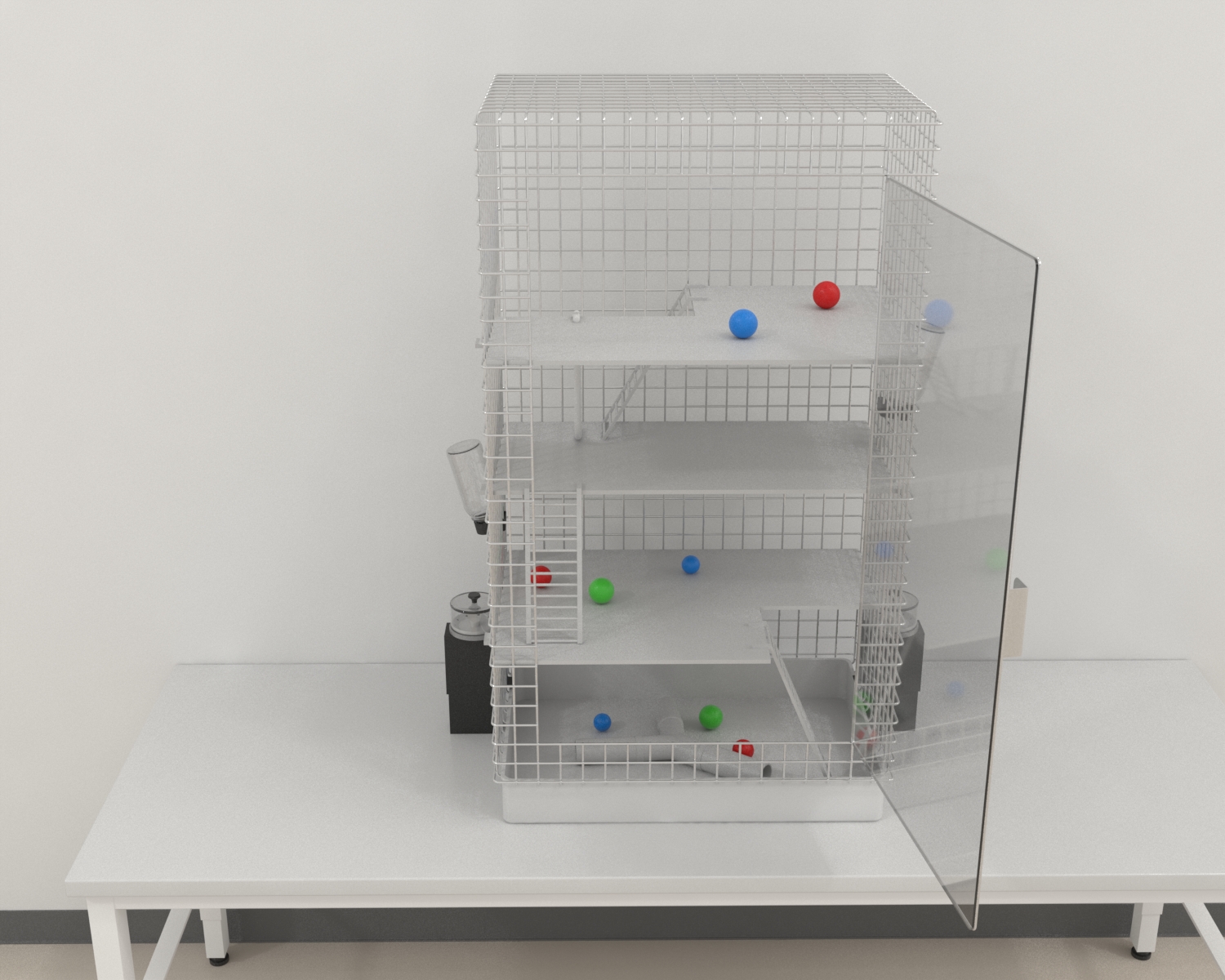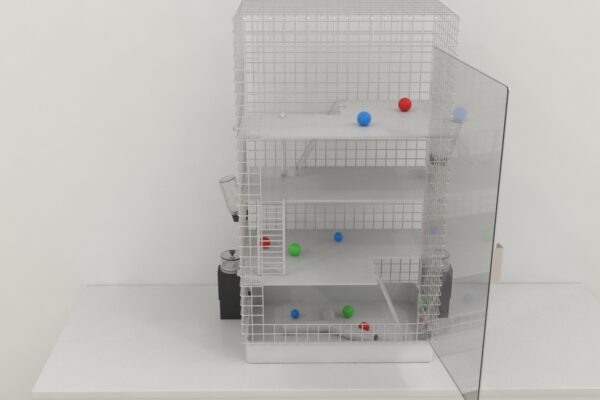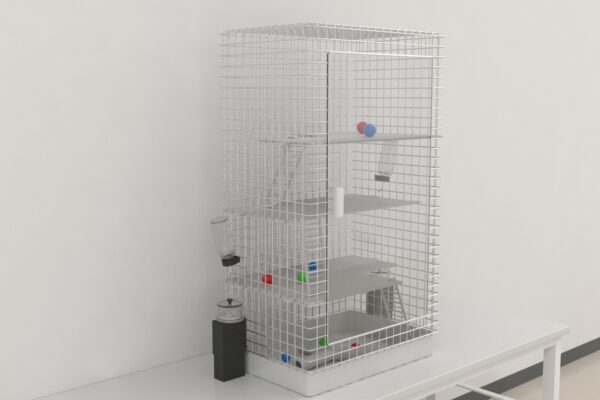The EE Cage was used by Marta Balietti et al. (2019), to show that aged rats with different performances at environmental enrichment onset display different modulation of habituation and aversive memory.
EE cages had three floors, two balconies and four flights; they contained several objects (i.e. plastic tunnels, wooden sticks to gnaw, toys, balls, paper nesting material, a running wheel, several feeding boxes and water bottles) that were changed or moved twice per week to maintain the novelty and encourage foraging behavior.
Mazeengineers offers the EE Cage.




